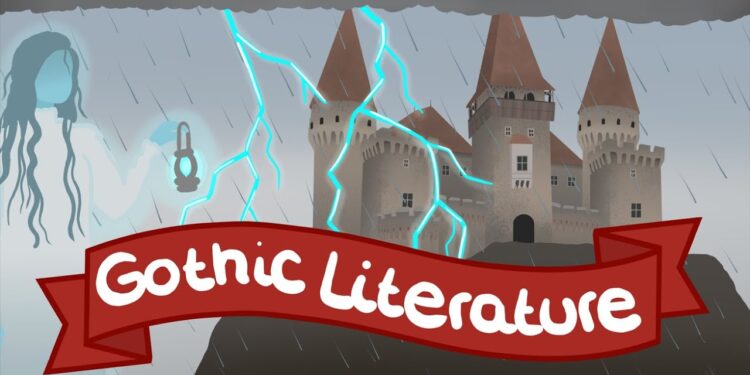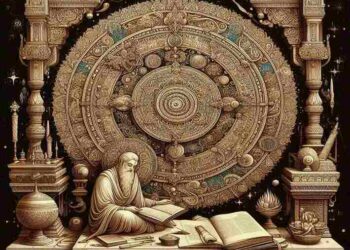Introduction
Exploring The Dark Themes Of Gothic Literature With its examination of the macabre, the occult, and the darkest aspects of human nature, Gothic literature, which first appeared in the late 18th century, has enthralled readers for ages. Gothic literature explores the complexity of dread, loneliness, and madness by fusing aspects of horror, mystery, and the sublime.
This gives readers a view into the darker corners of the human brain. The genre’s dark themes—which include ominous settings, haunted castles, tragic heroes, and supernatural happenings—have produced a wealth of narrative material and still arouse strong feelings in readers today.
The examination of human vulnerability—whether shown as physical or mental suffering—as well as an innate curiosity about the unknown are central to Gothic literature. Gothic literature challenges readers to face their darkest fears and consider the lines separating illusion and reality by depicting spooky settings, evil people, and tragic occurrences.
Many of the genre’s classic works date back to the Victorian era, yet the grim themes of lunacy, decay, death, and the supernatural are timeless.
The main gloomy themes of Gothic literature will be discussed in this article, along with how they are shown in great works such as Edgar Allan Poe’s short stories, Bram Stoker’s Dracula, and Mary Shelley’s Frankenstein, and why they are still important today.
The genre forces readers to confront the human condition in its most eerie and horrifying manifestations, from the gothic hero to the ghostly presence that haunts the pages of these books. We’ll examine Gothic literature’s key themes and discover why it continues to have an impact on contemporary horror, literature, and popular culture.
1. The Supernatural: Fear of the Unknown
One of the most defining characteristics of Gothic literature is its exploration of the supernatural. Ghosts, vampires, monsters, and otherworldly forces are not merely accessories to the plot but play a central role in shaping the narrative and the psychological journeys of the characters. The supernatural elements in Gothic literature often symbolize the unknown, the uncontrollable forces that lurk just beyond the boundaries of the rational world.
Read more
A. Monsters and the Unknown
In Frankenstein, Mary Shelley creates a creature that transcends the realm of human understanding. Dr. Frankenstein’s monster, created through unnatural scientific methods, embodies society’s fears of unchecked knowledge and the hubris of playing god. Similarly, in Dracula, Count Dracula represents both an external supernatural threat and the internal fear of contamination, as the vampire embodies the boundary between life and death, civilization and barbarism. These works exemplify the Gothic fascination with the supernatural as both a physical and psychological terror, with the unknown representing the limits of human control.
B. Ghosts and Haunted Spaces
Gothic literature frequently features haunted castles, mansions, and desolate landscapes, creating an atmosphere of dread. The idea of ghosts or spirits that refuse to move on symbolizes the persistence of the past, trauma, and unresolved emotions. The haunted house, whether literal or figurative, becomes a place where characters confront their fears, regrets, and the consequences of past actions. Works like The Turn of the Screw by Henry James explore the psychological effects of haunting, blurring the line between reality and madness.

2. Isolation and Alienation: The Struggle for Identity
Another dominant theme in Gothic literature is isolation—both physical and emotional. Many Gothic heroes and heroines are deeply alienated, cut off from society, and struggling to define their identities in a world that seems indifferent or hostile to them. This isolation is often linked to a sense of personal or social decay, and characters frequently find themselves trapped between different worlds: the living and the dead, the rational and the irrational.
A. The Gothic Hero
The figure of the Gothic hero—often a brooding, tormented character—is a prominent aspect of the genre. These characters tend to be misunderstood by society, frequently marked by tragic flaws or deep psychological scars. They are often portrayed as outcasts, isolated from the world due to their darker natures or their experiences with trauma. Characters such as Heathcliff from Emily Brontë’s Wuthering Heights or Dr. Frankenstein embody this isolation, trapped in their own obsessions and emotional turmoil.
B. The Isolation of the Mind
In works like The Fall of the House of Usher by Edgar Allan Poe, the isolation of the mind is as central as physical seclusion. The psychological terror in these stories is often exacerbated by the characters’ inability to escape their own thoughts, madness, or guilt. The house itself, or the body, becomes a prison for the character’s psyche, reinforcing the theme of alienation. The disintegration of the self, either through guilt, obsession, or madness, is a recurring motif in Gothic literature.
3. Death and Decay: The Destructive Power of Time
Death and decay are pervasive themes in Gothic literature, often symbolizing not just the end of life but also the inevitable decline of both individuals and society. These themes are explored through decaying bodies, ruined castles, and fading memories, all of which evoke a sense of hopelessness and the passage of time. The Gothic preoccupation with death is not limited to physical death alone; it extends to spiritual death, decay of morality, and the crumbling of social norms.
A. The Fear of Mortality
In Gothic works, death is often portrayed as both an inevitable fate and a mysterious force that can be manipulated or defied. Dr. Frankenstein’s quest to overcome death by reanimating the dead challenges natural boundaries, reflecting humanity’s complex relationship with mortality. Similarly, in Dracula, the vampire is a metaphor for immortality and the unnatural extension of life, underscoring the horror of living beyond the natural lifespan.
Read more
B. The Ruins of the Past
The crumbling of old buildings or decaying environments in Gothic fiction often serves as a metaphor for the degradation of the human soul or society. The physical decay of structures like the House of Usher symbolizes the deterioration of both family lines and mental states. The Gothic world is filled with remnants of the past—long-forgotten secrets, ruined mansions, and buried sins—that refuse to stay buried, continuously threatening to resurface and wreak havoc on the present.
4. Madness and the Breakdown of Reason
Madness and the fragility of the human mind are recurring motifs in Gothic literature. The genre often explores how societal pressures, trauma, or personal flaws lead characters to the brink of insanity. The breakdown of reason is a key element in the genre, as it highlights the tenuous balance between rationality and irrationality, and how easily that balance can tip into madness.
A. The Descent Into Madness
Characters who descend into madness often do so as a result of overwhelming guilt, grief, or the inability to reconcile their inner desires with societal expectations. In The Yellow Wallpaper, Charlotte Perkins Gilman explores the psychological breakdown of a woman suffering from postpartum depression, locked away and ignored by her husband, who believes the cure for her condition is isolation. Similarly, in The Tell-Tale Heart by Edgar Allan Poe, the narrator’s obsession with a hidden crime leads him to madness, showcasing the fragile nature of the mind under duress.
B. The Unreliable Narrator
The unreliable narrator is a common feature of Gothic literature, where the line between reality and delusion becomes increasingly blurred. This technique allows the author to explore the complexities of the human mind, often leaving readers to question whether events are happening as described or if they are the product of the narrator’s unstable perception. These characters often act as metaphors for the fractured, unstable state of their own psyches.

Conclusion
Gothic literature’s capacity to explore the darker facets of the human experience is what keeps readers interested in its grim themes of death, loneliness, insanity, and the paranormal. The genre’s examination of pain, dread, and the unknown appeals to our most basic feelings and the aspects of ourselves that we are frequently afraid to face.
Gothic literature challenges us to examine the lines separating reality from illusion, sanity from crazy, and life from death through its spooky atmospheres, morally complicated characters, and unpleasant narratives.
These themes remain relevant in contemporary culture, as modern readers still grapple with fears of the unknown, psychological isolation, and the inevitable passage of time. The genre’s influence can be seen in a wide range of modern horror films, literature, and pop culture, proving that the dark allure of Gothic themes is not something relegated to the past.
By confronting the darkness of the human psyche, Gothic literature offers a mirror to our own fears and anxieties, offering a cathartic experience for those brave enough to venture into its shadowy depths.
Read more
FAQ
1. What is Gothic literature?
Gothic literature is a genre that emerged in the late 18th century, characterized by elements of horror, mystery, and the supernatural. It often explores themes such as isolation, madness, death, and the fear of the unknown, set against eerie or haunting backdrops like crumbling castles or desolate landscapes.
2. What are some common themes in Gothic literature?
Common themes in Gothic literature include the supernatural (ghosts, monsters, and otherworldly forces), isolation and alienation, death and decay, and madness. These themes often explore the darker aspects of human nature and the limits of reason and control.
3. Why is isolation such an important theme in Gothic literature?
Isolation in Gothic literature often represents both physical and emotional separation from society, leading to a sense of alienation. This theme is significant because it allows characters to confront their fears, trauma, and inner demons, often resulting in madness, self-destruction, or a deeper understanding of their identity.
4. How does Gothic literature explore the theme of death?
In Gothic literature, death is often portrayed as a force that transcends the natural order, either through reanimated corpses, immortal beings like vampires, or the decay of societal structures. Death symbolizes not just physical demise, but also the breakdown of social norms, morality, and the human psyche.
5. Why are Gothic novels still popular today?
Gothic novels remain popular because they tap into universal fears and explore deep psychological themes that continue to resonate with modern audiences. Their eerie atmospheres, complex characters, and exploration of the unknown make them appealing to readers seeking both entertainment and introspection.
Read more
















